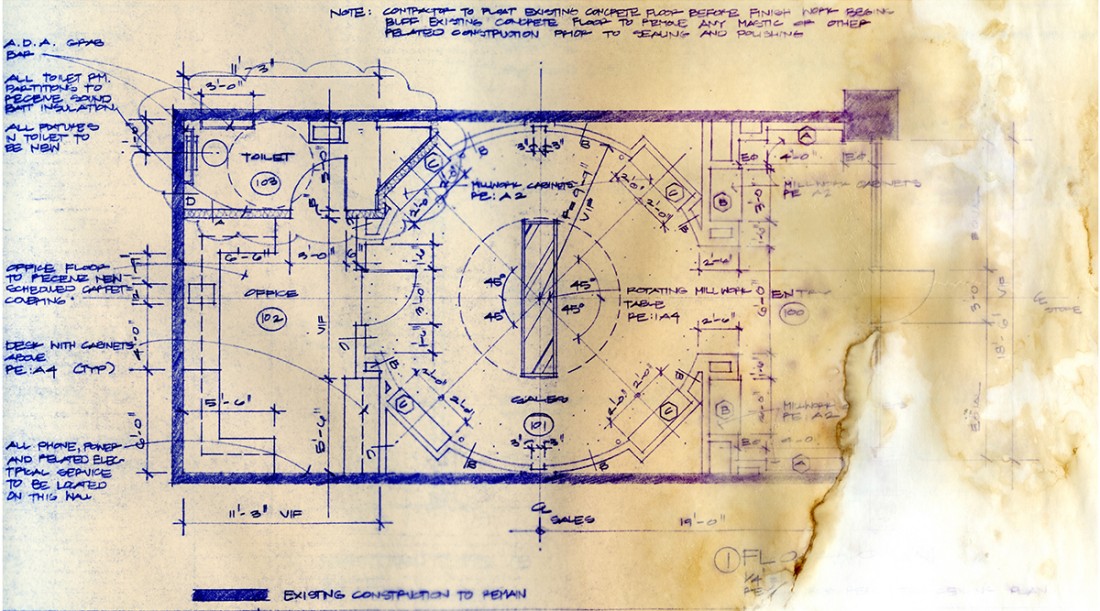Considering how much interest there is whenever the topic of construction drawings mentioned, I thought I would isolate out a small portion of what was originally going to be part of the last Architectural Graphics 101 post and focus pointedly on leader lines and how you connect a note to the portion of the drawing it represents. That’s right, I am talking about arrows and tick marks, the little blobs of ink at the end of the notation lines.
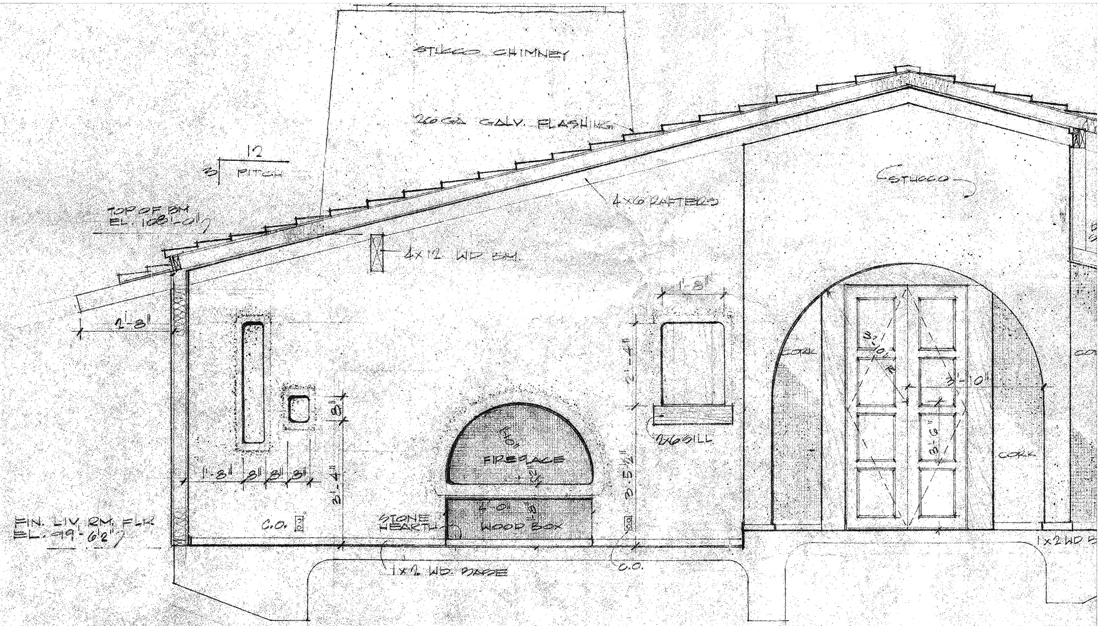
To facilitate today’s conversation, I decided that I would go back through some drawings I own that predate electronic drawings. The image above was from a set of drawings that were prepared in 1967 and what I was looking for in this image was an example of the marks that are made at the end of “leader lines” – which is the line that connects a note to the item it is referencing. You have to look really, really closely just to see the little tick marks that are at the end of each leader line, and in some instances, it doesn’t appear that all leader lines even have tick marks. I’m not sure when it happened but when I was still drawing by hand, we used arrows – this is true from the time I entered college (in 1986) through the first several years of my professional career … I’m guessing it was 2002 or so before the switch to “tick” marks.
If you are interested, you can see a better view of the built version of this elevation here (Old Modern Fireplaces).
When I came out of school, the fashion was to use arrows at the end of your leader lines. The drawing above was from the first project I ever designed entirely on my own once I was out of school. (You can see the entire project here: My First Project: The Best Project Ever Designed that Wasn’t). If you look at this plan you can see that it is resplendent with arrows on the end of my leader lines … here is another fun fact: We used French Curves to draw those leader lines so they would be curved and the contractor would be less likely to misinterpret them as construction lines.
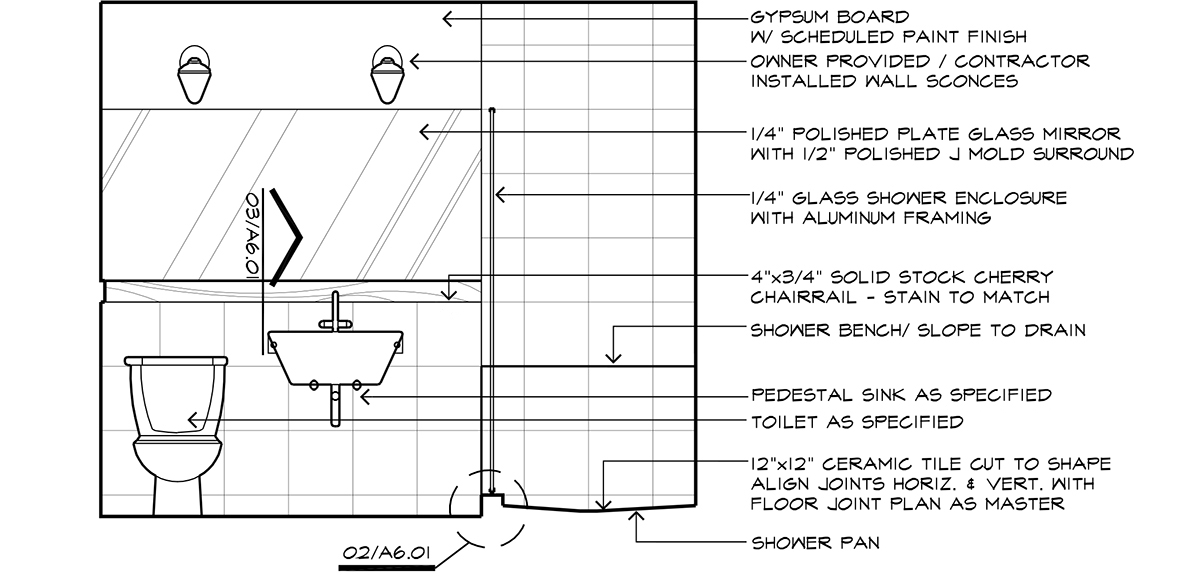
It makes sense to me that once I started drafting on the computer, that my leader lines would look like the ones that I had been drawing while I was hand-drafting, right? So fast forward a few years and we are back to the first residential project I ever did and are you surprised to see that I am using arrows at the end of my leader lines? Since these drawings were prepared using AutoCAD, I was able to draft the arrowhead I wanted and then set it as a block to be used in my leaders. (Here’s another fun fact … I did the same thing for the slash marks I used for my dimension strings.)
I will tell you that I went looking for a better example because I don’t like the way these arrowheads look … they are too light. I feel extremely confident that while I used these in the first residential project I ever drew, these arrowheads did not remain like this for long.
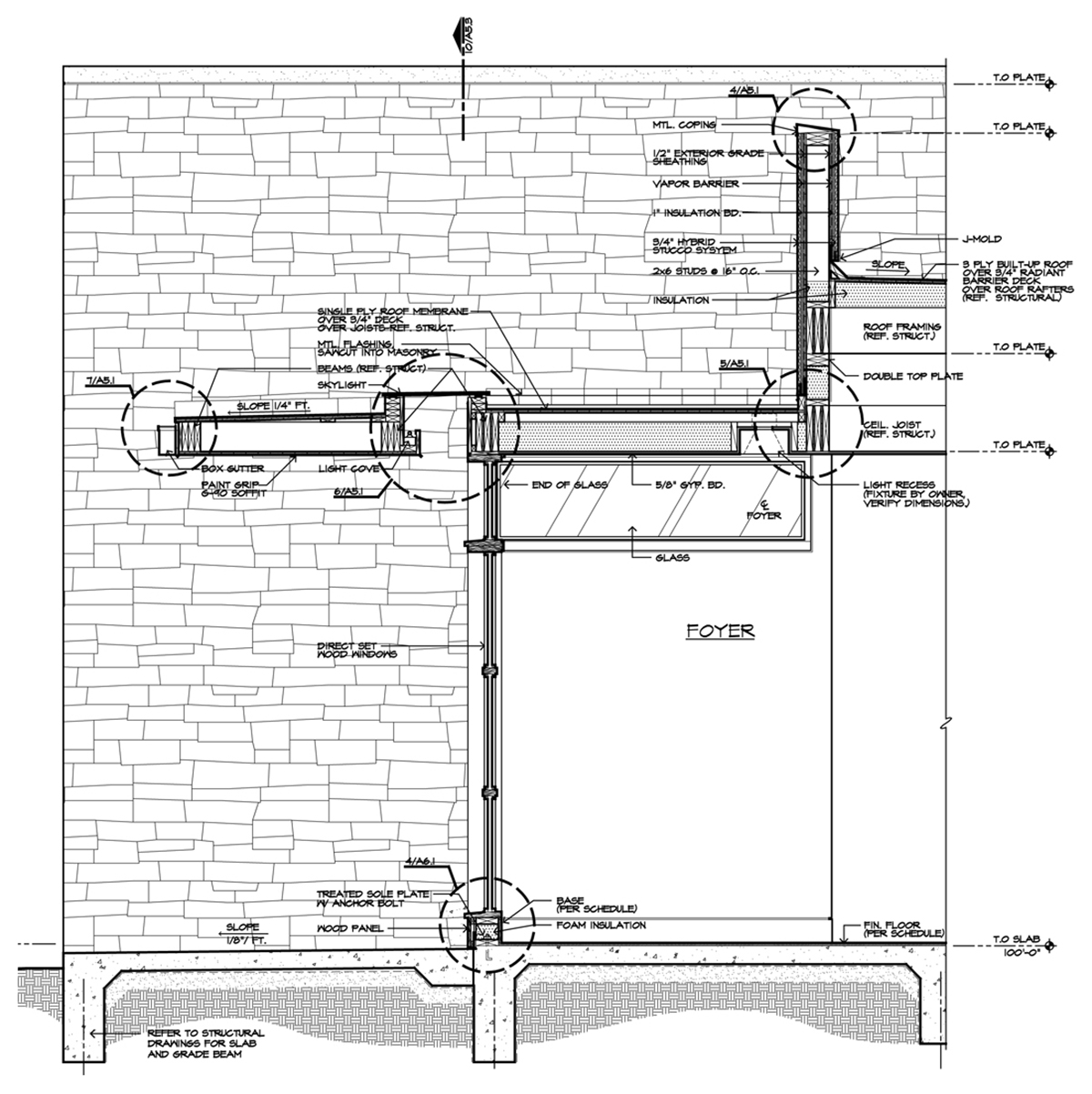
In my hunt for a more recent CAD drawing, I came across this wall section that was created probably around 2006 … It has “Bob pen weight standards” written all over it. I am still using the arrowheads on my leader lines … but I am curious if anybody reading this has a guess as to why I eventually changed to the tick mark?
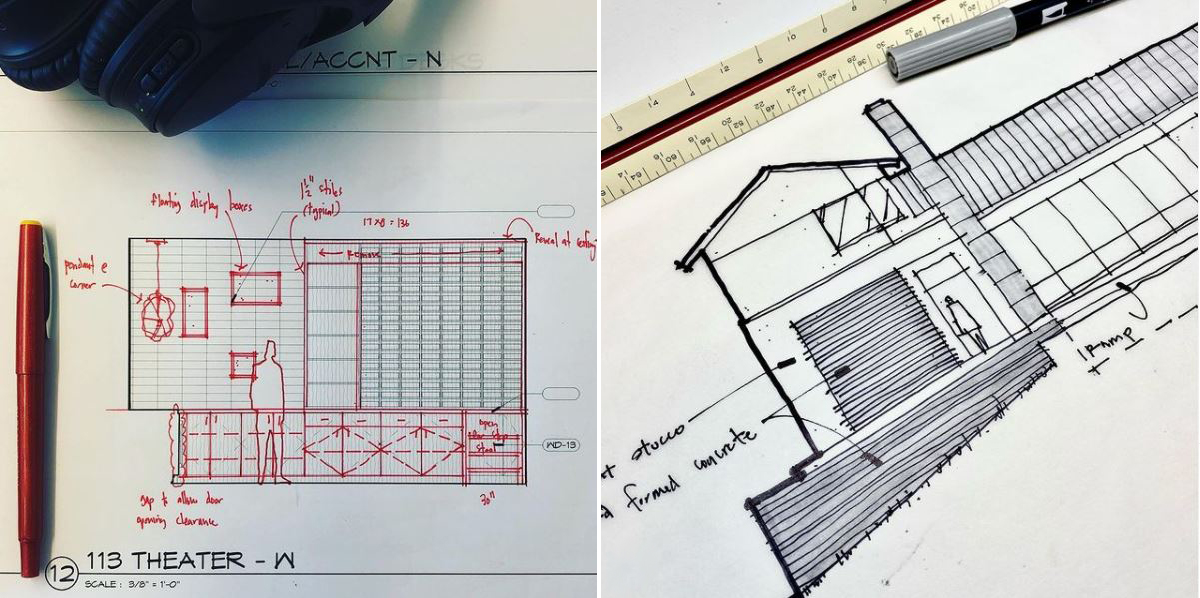
Even in my sketches I periodically switch between the arrowhead and the tick mark … and in the example sketches I am showing above, these are probably only 3 years apart and the one of the left I created just a month or so ago.
Any guesses?
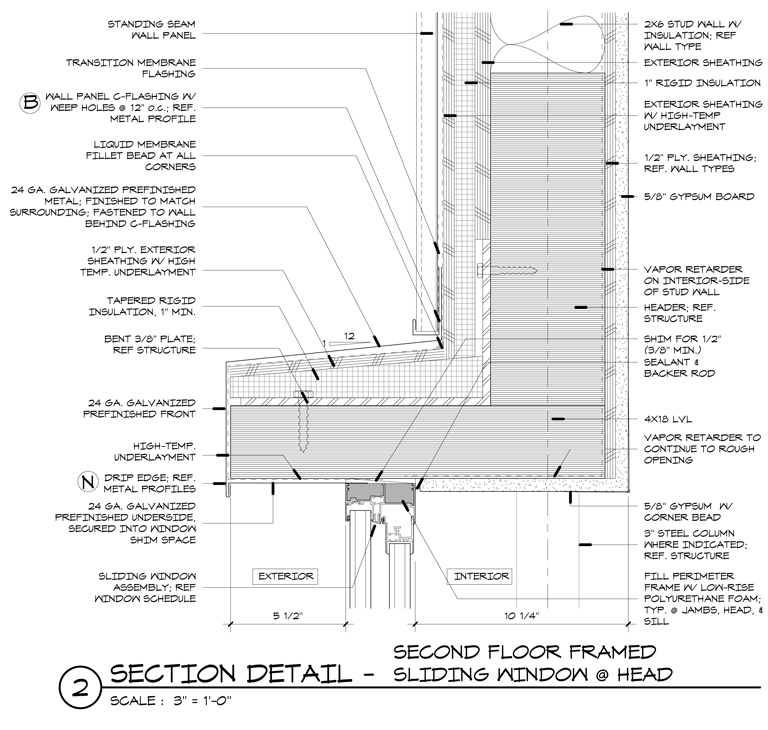
This detail is resplendent in tick marks … 26 in a single 3″ scale detail drawings has to be some sort of record.
Architectural Graphics: Arrows or Ticks?
For those of you who guessed “Revit” as the reason I changed from arrowheads to tick marks in my drawings, you should give yourself a pat on the back. It wasn’t until my firm made the switch from AutoCAD to Revit did our graphics standards make the switch from arrowheads to tick marks. To be frank, I’m a little irritated at myself for making this graphic change for no other reason than Revit didn’t have arrowheads as part of their software … at least not ones that I can recall liking. So which one is better? Pretty sure most people don’t care and I will confess that I don’t have strong opinions about it myself at this point since I am now committed to the tick.
But should I be? The stuff I decide to think about should be a concern to my future caregivers.

